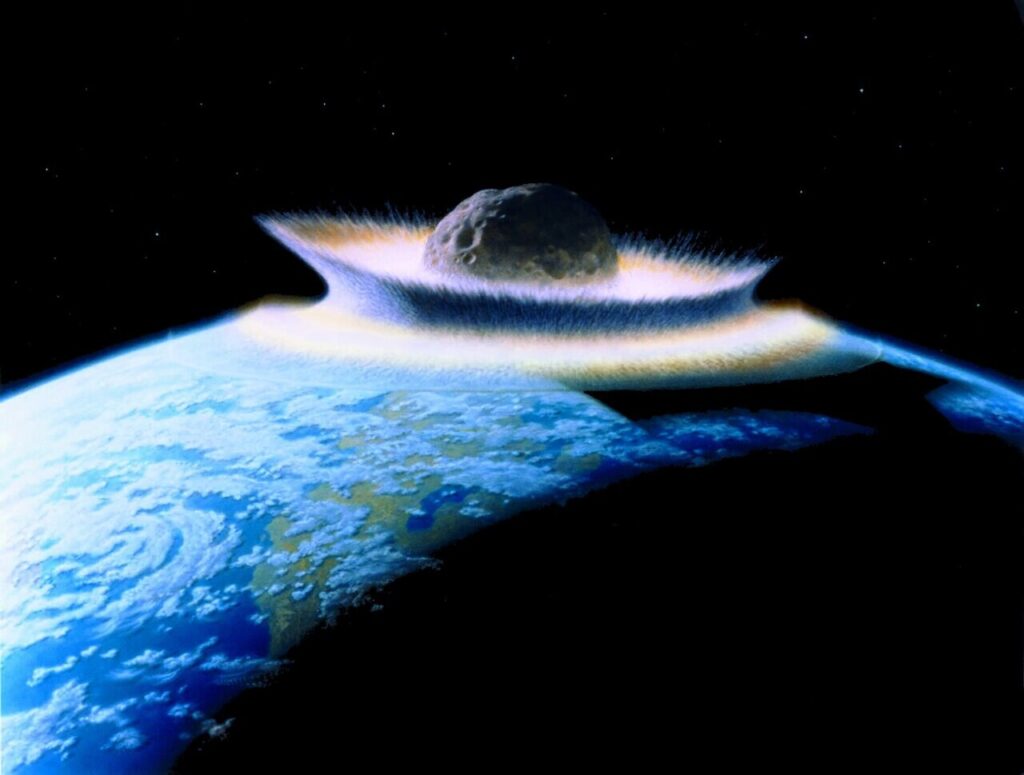According to science, we are, once again, going to sniff disaster as a massive asteroid screams by our planet this Friday. It’s not particularly surprising, as zooming dangerously close to stuff is like, an asteroid’s absolute favorite thing to do. It feels like we get a warning about this every couple months. I suppose it should be kind of scary, but after the last couple of years, my anxiety receptors look like the tip of a spent matchstick, so it’s hard to feel anything above my general baseline of vague fear.
Regardless, if this sort of thing raises your hackles, why not distract yourself with some FUN FACTS!
They’re 4.6 Billion Years Old
I am not a man of science, and as such, I feel I have not fully understood that asteroids have just been kicking around since the formation of the solar system. Given that they’re just kind of fucked-up rocks, I assumed they were snapping off planets or forming willy-nilly, nothing special. I apologize, asteroids, I was not familiar with your game. Each one is a little, 4.6-billion-year-old memento of our solar system’s first birthday.
They’
re Also Called Minor Planets, Which… Sure
I know I just apologized to asteroids, but I am regrettably going to have to immediately take them down a peg again. Look, alternating praise and condemnation is a powerful tool of dominance! Sources mention the fact that asteroids are also known as minor planets, and here, despite having no qualifications or knowledge of the criteria, I’m going to plant my non-waving flag and say: No, they’re not. They’re asteroids. That’s like calling a dollhouse a “minor building.”
Asteroids Can Have Moons, Too
The only thing that gives me pause on my new, but deeply held distaste for their “minor planet” moniker is finding out that asteroids can have their own moons. Over 150 asteroids have been confirmed with a companion moon or two. If you think the term “companion moon” is adorable, get ready for this shit: Sometimes two asteroids of equal size can orbit each other like they’re dancing a little space salsa.
Every Monty Python Member Has Their Own Asteroid
Plenty of asteroids have been slapped with celebrity monikers, including ones for Spock from Star Trek and Frank Zappa. Is it just a fun way to desperately try to get the general public interested in science? Perhaps. Still, if I knew I had an asteroid hauling ass through the great unknown with my name on it, I’d be pretty jazzed. My personal favorite set of names are the full Monty Python comedy troupe, each of which has been given a rocky little son somewhere out in our solar system.
Most of Them Are Between Mars and Jupiter
Speaking of our solar system, the vast majority of its asteroids are contained within a single belt between Mars and Jupiter. There’s one massive reason why, and here’s a hint: It’s not Mars. Look, Mars, you have a lot of cool stuff going for you — rovers, being called “The Red Planet,” but sizewise Jupiter’s got you beat. It’s this size, and the massive gravitational pull that comes with it that’s caused most of our asteroids to settle in under its large, comforting orbital presence.
There’
s An Adorable Little 6-Foot-Long Asteroid
Let’s jump directly to the opposite side of the spectrum when it comes to size, and learn about the lil’est asteroid we ever did find. The asteroid 2015 TC25 is only six feet across, meaning you could plop that sucker in a kiddie pool and sell tickets if you so desired. One gripe I have: With all the celebrity-named asteroids, you get one that fun, and you go with a meaningless alphanumeric hash? Why aren’t we talking about KevinHart25? Of course, that blunts the honor of the thing a bit.
They’
re Irregularly Shaped Because of Weak Gravitational Pull
If, until this moment, you’d asked me why asteroids are irregularly shaped bits of rock, I would have treated it like asking me the meaning of life. It’s just like that, we’re not getting an explanation and we have to deal with it. It turns out, though, that their strange shape is due to that same “micro planet” threading of the needle on size. Planets are spherical because their gravitational pull keeps them that way. Asteroids have enough gravitational pull to keep themselves together in a vacuum, but not enough to make everything pretty and smooth.
Spacecraft Have Landed on Them
Look, I know that this layman’s idea of movement in space is built on absolutely zero scientific fact. Everything is, in its own way, zooming around out there. However, in the same way that I feel in my gut that dogs are boys and cats are girls, in my head, planets don’t move and asteroids move very fast. I wouldn’t write that on a test, but I would mutter it to myself in a moment of silence. That might be why it was mildly surprising to me that spacecraft have successfully landed on asteroids. That said, it still feels like a cosmic-scale trick shot where a ping-pong ball lands in a cup taped to a Hot Wheels car.
Some Have Water Inside Like Space Gushers
It’s generally known that some asteroids have, or have had, water in them, but I think we’re not freaking out about it enough. Water feels to me very much like “Earth Stuff” that asteroids shouldn’t have. I know it’s just hydrogen and oxygen and blah blah blah, but it’s crazy to me that they have, like, water water in them. Like the same stuff that’s in my Brita. It’s becoming rapidly clear why STEM wasn’t the path for me. But who’s writing about who now, nerds!

